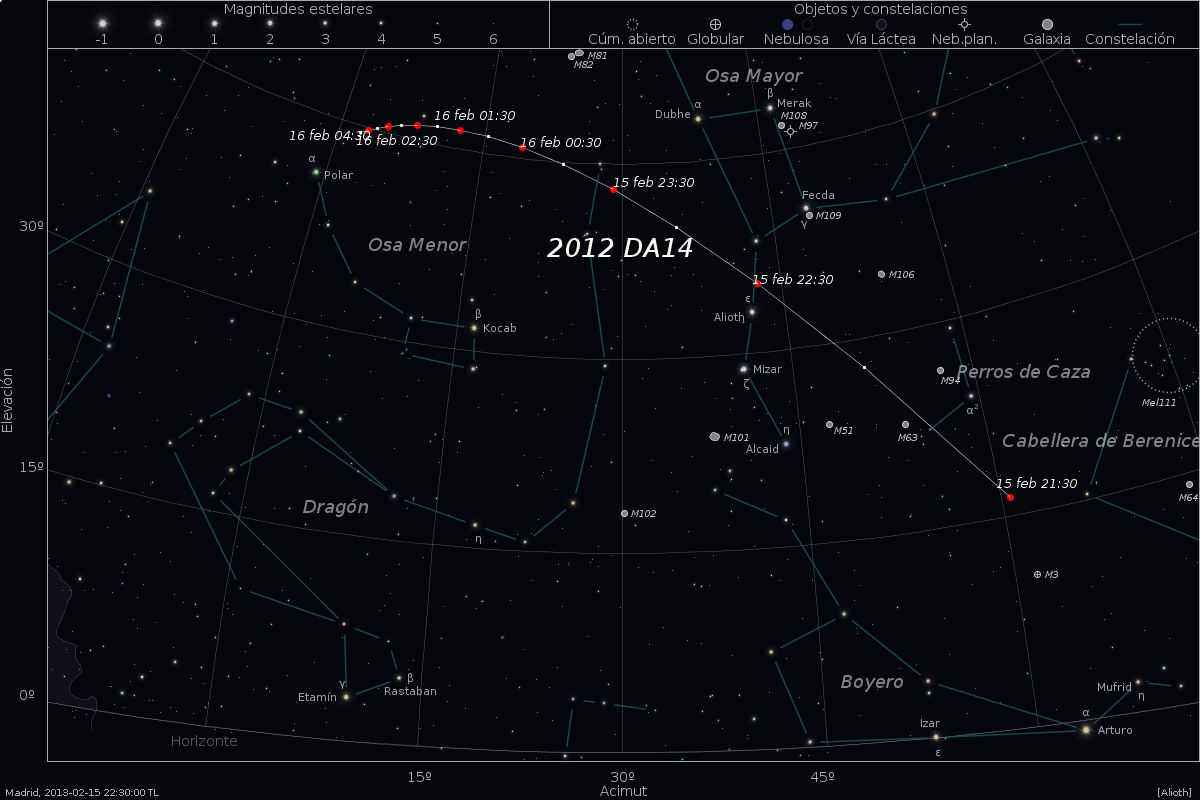How to observe the Asteroid 2012 DA14 with binoculars [NOT TRANSLATED]

The Asteroid 2012 DA14 is an object about 40 meters in diameter, traveling through space at about 6km/s speed, and will approach Earth at about 27,000 km above the earth’s surface. In fact, its path will go straight through the geostationary orbit, populatd with comercial satellites, such as telephony or GPS. However, its approach does not pose a threat to society since it will not impact on Earth.
To observe the astronomical event, you only need a pair of binoculars and know where to find the object in the sky. This little space rock will be crossing the constellation of Ursa Major around 22:30 h and if weather allows it, we will be able to see it in the sky like a small star of magnitude +7.5 on the stellar background (slightly below the visible the naked eye).
Below, you may fin the press release we have written for this event and its possible relation with the meteorite that fell this morning on Russian soil. Aparently, and according to statements released by the ESA and JPL, the path of Asteroid 2012 DA14 and this morning’s meteorite do not coincide, which determines that they become from different events.
We also include the ephemeris of the Asteroid (table created by the Meteorite group at the Institute of Space Sciences ICE(CSIC-IEEC) as well as a map of the Asteroid’s path, provided by the National Astronomical Observatory (Observatorio Astronómico Nacional – OAN).
– Press release – Spanish pdf
– Ephemeris of Asteroid 2012 DA14
Figure: Map of the Asteroid’s path – Crédit OAN.
2012DA14_Madrid [NOT TRANSLATED]
